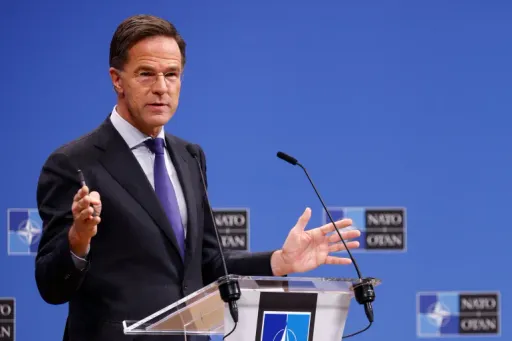NATO leaders are expected to unveil an ambitious new defence spending pledge at this week’s summit that would require every member nation to spend 5 percent of their respective economic output on military spending.
However, even before the announcement, key allies are securing exceptions, and questions are swirling over how enforceable the goal will be.
Spain has reached a deal to be excluded from the 5 percent target, Prime Minister Pedro Sanchez confirmed on Sunday, as NATO finalises the language of a pared-down one-page summit communique. The text will reportedly drop earlier phrasing that required “all allies” to commit to the goal.
Meanwhile, US President Donald Trump, a driving force behind the push for higher allied defence spending, said the 5 percent benchmark should apply only to America's partners, not to the United States itself.
“I don’t think we should, but I think they should,” Trump said on Friday, calling out Canada as “a low payer” and adding, “NATO is going to have to deal with Spain.”

What the 5 percent entails
The proposed 5 percent spending goal comprises two parts. The first — and most demanding — is a 3.5 percent GDP commitment to core military spending, a sharp increase from NATO’s longstanding 2 percent benchmark, which only 22 of 32 allies have met.
The second 1.5 percent includes broader investments in civilian infrastructure, cyber defence, and societal resilience — measures like upgrading roads, ports, and airfields to facilitate rapid military deployment, as well as preparations for hybrid and cyber warfare.
While most countries can meet the second category with relative ease, the 3.5 percent defence commitment poses a steep challenge, especially for countries like Spain.
Spain currently spends just 1.28 percent of its GDP on defence, NATO estimates show — the lowest in the alliance. Sanchez says his government will raise that figure to 2.1 percent, which he claims is enough to meet NATO’s “capability targets”, which deal with the specific military roles and equipment contributions assigned to each member.

Domestic headwinds
Sanchez’s government is facing mounting pressure at home, where he depends on a fragile coalition and is grappling with corruption allegations affecting his political inner circle. Opposition parties have already begun pushing for early elections, complicating any effort to significantly boost military outlays.
Spain is also among Europe’s smallest contributors of military aid to Ukraine.
Rising stakes for Europe
The push for higher spending comes amid growing alarm over Russia’s war with Ukraine and signs of expanded hybrid warfare — from cyberattacks to GPS jamming and infrastructure sabotage — across the continent. NATO planners say defending Europe against a potential Russian assault requires a minimum of 3 percent of GDP in military investment.
Several frontline and northern European countries, including Germany, Norway, Sweden, the Netherlands, and the Baltic states, are expected to meet or exceed the full 5 percent target. The Netherlands alone estimates it will need to find an additional €16–19 billion ($18–22 billion) to meet its obligations.
Spanish Foreign Minister Jose Manuel Albares argued on Monday that the focus should be on capabilities, not just percentages. “Spain can meet the alliance’s needs with 2.1 percent,” he insisted.

A deadline in sight?
The alliance is also debating how quickly members should ramp up their spending.
A 2032 deadline has been floated, which is far more aggressive than NATO’s previous open-ended goals. But concerns about Russia’s ability to regroup militarily in the next five to 10 years are driving urgency.
While some, like Italy, are requesting a full decade to meet the target, others want a tighter timeframe. Discussions have even included a possible review in 2029 and an extended deadline to 2035 for lagging members.
Still, as Trump made clear, patience is wearing thin. “We’ve carried NATO long enough,” he said. “Now it’s their turn.”



















